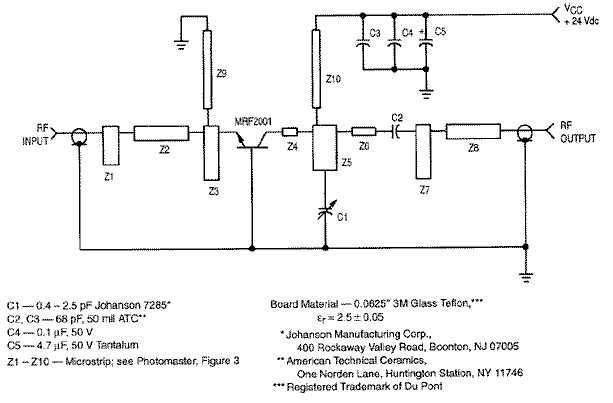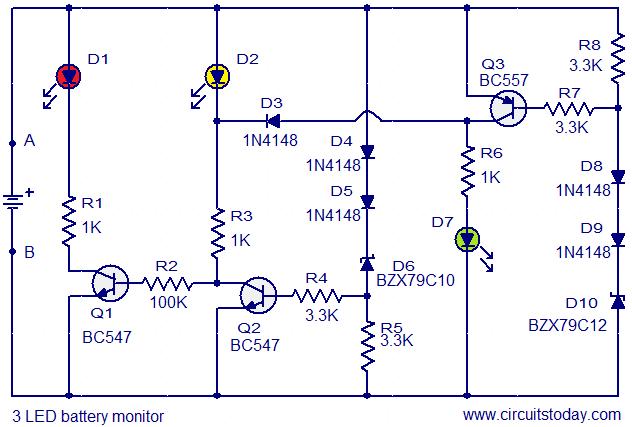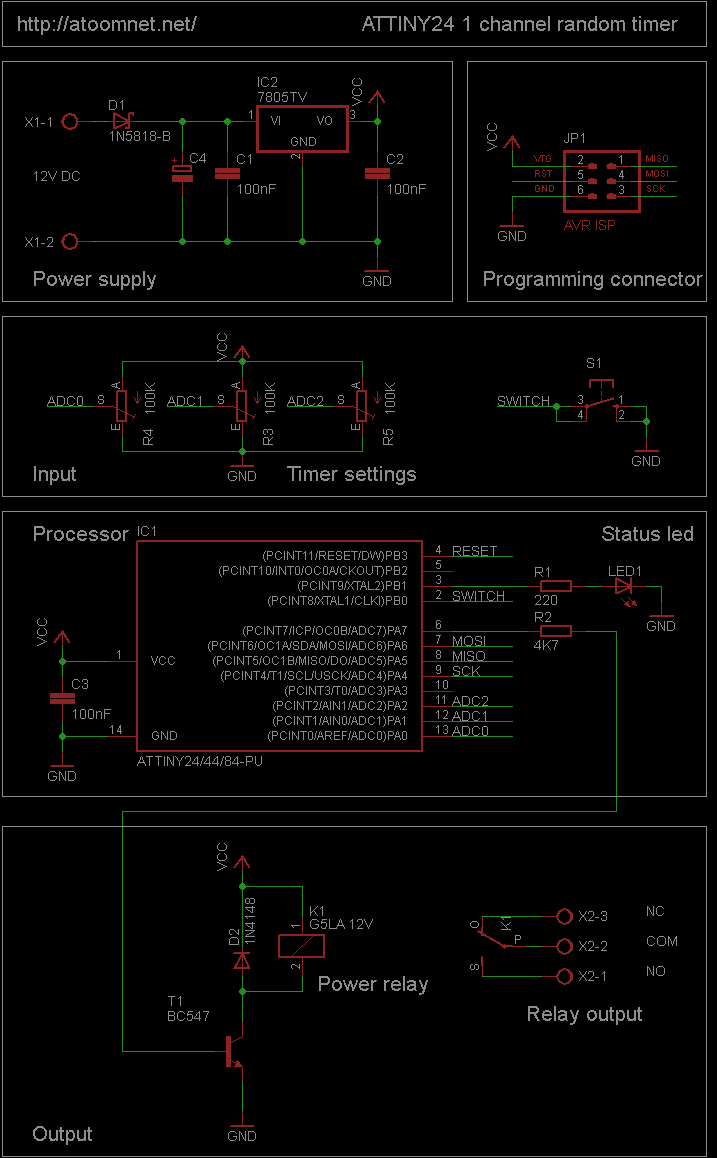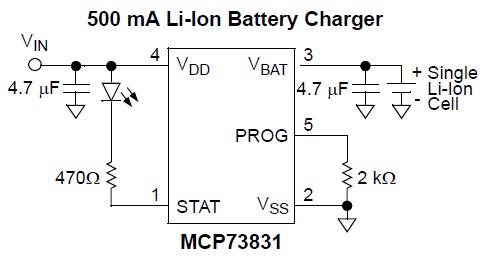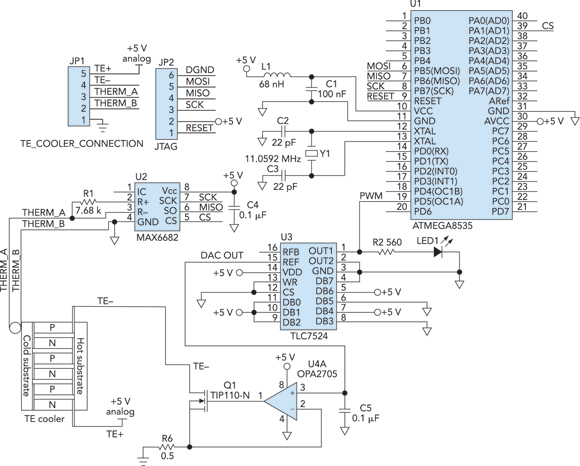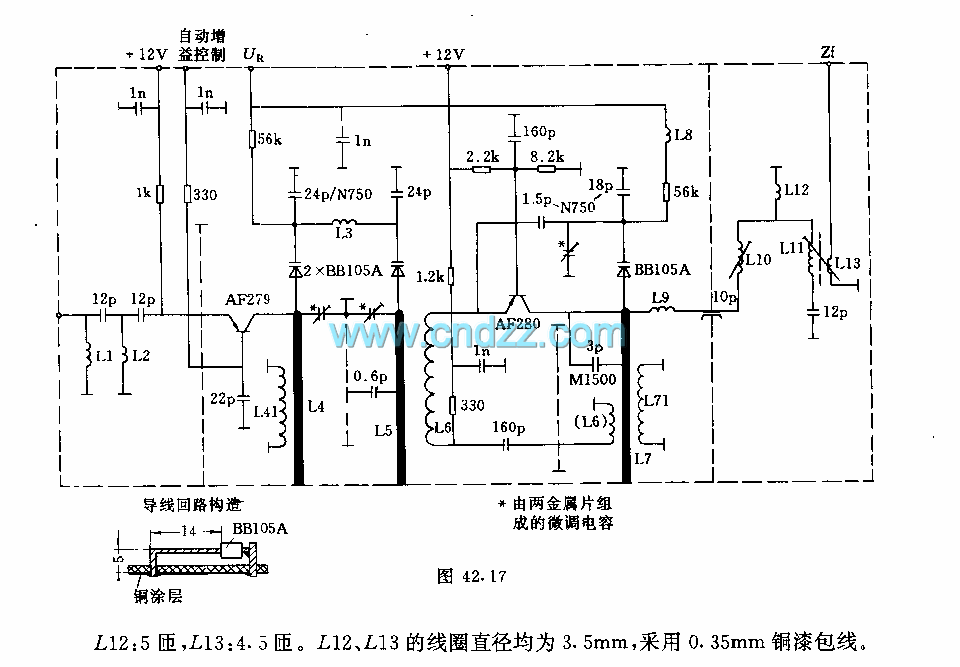
Automatic lamp dimmer circuit
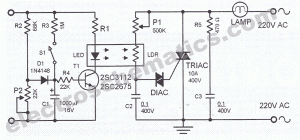
This automatic light dimmer circuit enables the gradual control of a lighting system, allowing it to turn on or off slowly. The operation of the circuit is as follows: when switch S1 is closed, capacitor C1 charges slowly. Once the voltage across C1 reaches 0.6 volts, transistor T1 begins to conduct, causing the LED to light up. As the voltage across the capacitor increases further, transistor T1 allows more current to flow, resulting in a brighter LED. The illumination of the LED decreases the resistance of the light-dependent resistor (LDR), which in turn causes the silicon-controlled rectifier (SCR) to conduct periodically at an earlier stage. This technique facilitates a gradual increase in the lighting system. Conversely, when switch S1 is turned off, the LED does not extinguish immediately due to the slow discharge of the capacitor voltage at the base of T1. Consequently, the LED dims gradually until it is completely off, allowing for a smooth transition before turning off. The potentiometer P2 should be adjusted to ensure that the anode voltage of diode D1 is approximately 0.7 volts. Achieving this setting results in a capacitor voltage of around 0.5 volts during standby, indicating that the lights are off.
The automatic light dimmer circuit utilizes several key components to achieve its functionality. The primary components include a switch (S1), a capacitor (C1), a transistor (T1), a light-dependent resistor (LDR), a silicon-controlled rectifier (SCR), a diode (D1), and a potentiometer (P2).
When the circuit is powered, the closing of switch S1 initiates the charging process of capacitor C1. The slow charging is crucial as it determines the time delay before the LED lights up. The voltage threshold of 0.6 volts across C1 is significant as it activates transistor T1. This transistor acts as a switch that controls the current flow to the LED based on the voltage level of the capacitor.
The interaction between the LED and the LDR is essential for the dimming effect. As the LED illuminates, the resistance of the LDR decreases, which allows the SCR to conduct sooner than it would otherwise, thereby enhancing the gradual illumination of the lighting system.
The gradual dimming effect when switch S1 is opened is achieved through the slow discharge of the capacitor C1. This characteristic ensures that the LED does not turn off abruptly, providing a more aesthetically pleasing transition from bright to dark.
The adjustment of potentiometer P2 plays a critical role in setting the operational parameters of the circuit. By ensuring that the anode voltage of diode D1 is approximately 0.7 volts, the circuit is optimized for performance, allowing the capacitor to maintain a standby voltage of around 0.5 volts when the lights are off.
Overall, this automatic light dimmer circuit is a practical solution for applications where gradual lighting control is desired, enhancing both functionality and user experience.This automatic light dimmer circuit makes it possible to control a lighting system so that it turns on or off slowly. The circuit works this way: when switch S1 is closed, the capacitor C1 is slowly charged. Once the voltage at C1 reaches 0. 6, transistor T1 begins to conduct and the LED also begins to light. If the capacitor voltage increases furt her, then transistor T1 conducts more current and in return the LED lights brighter. If the LED lights up, the LDR resistance decreases causing the SCR to conduct periodically earlier. This tehnique causes the lighting system to turn on slowly. On the other hand if switch S1 is turned off, meaning the switch is opened, the LED does not immediately turn off since the capacitor voltage at the base of T1 discharges slowly. The LED slowly dims until finally turns off. This causes the lighting dim out before it finally turns off. Potentiometer P2 must be set so that the anode voltage of D1 is about 0. 7 volts. If this is done, the capacitor voltage will be around 0. 5 volts during standby, meaning lights off. We aim to transmit more information by carrying articles. Please send us an E-mail to wanghuali@hqew. net within 15 days if we are involved in the problems of article content, copyright or other problems.
We will delete it soon. 🔗 External reference
The automatic light dimmer circuit utilizes several key components to achieve its functionality. The primary components include a switch (S1), a capacitor (C1), a transistor (T1), a light-dependent resistor (LDR), a silicon-controlled rectifier (SCR), a diode (D1), and a potentiometer (P2).
When the circuit is powered, the closing of switch S1 initiates the charging process of capacitor C1. The slow charging is crucial as it determines the time delay before the LED lights up. The voltage threshold of 0.6 volts across C1 is significant as it activates transistor T1. This transistor acts as a switch that controls the current flow to the LED based on the voltage level of the capacitor.
The interaction between the LED and the LDR is essential for the dimming effect. As the LED illuminates, the resistance of the LDR decreases, which allows the SCR to conduct sooner than it would otherwise, thereby enhancing the gradual illumination of the lighting system.
The gradual dimming effect when switch S1 is opened is achieved through the slow discharge of the capacitor C1. This characteristic ensures that the LED does not turn off abruptly, providing a more aesthetically pleasing transition from bright to dark.
The adjustment of potentiometer P2 plays a critical role in setting the operational parameters of the circuit. By ensuring that the anode voltage of diode D1 is approximately 0.7 volts, the circuit is optimized for performance, allowing the capacitor to maintain a standby voltage of around 0.5 volts when the lights are off.
Overall, this automatic light dimmer circuit is a practical solution for applications where gradual lighting control is desired, enhancing both functionality and user experience.This automatic light dimmer circuit makes it possible to control a lighting system so that it turns on or off slowly. The circuit works this way: when switch S1 is closed, the capacitor C1 is slowly charged. Once the voltage at C1 reaches 0. 6, transistor T1 begins to conduct and the LED also begins to light. If the capacitor voltage increases furt her, then transistor T1 conducts more current and in return the LED lights brighter. If the LED lights up, the LDR resistance decreases causing the SCR to conduct periodically earlier. This tehnique causes the lighting system to turn on slowly. On the other hand if switch S1 is turned off, meaning the switch is opened, the LED does not immediately turn off since the capacitor voltage at the base of T1 discharges slowly. The LED slowly dims until finally turns off. This causes the lighting dim out before it finally turns off. Potentiometer P2 must be set so that the anode voltage of D1 is about 0. 7 volts. If this is done, the capacitor voltage will be around 0. 5 volts during standby, meaning lights off. We aim to transmit more information by carrying articles. Please send us an E-mail to wanghuali@hqew. net within 15 days if we are involved in the problems of article content, copyright or other problems.
We will delete it soon. 🔗 External reference
